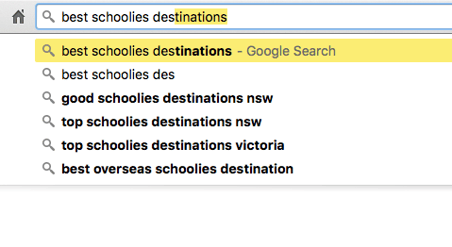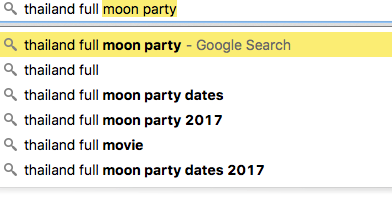
In the (not-so) olden days, a traveller would rock up to a tourism centre to learn about your tour.
Nowadays, these interactions are rapidly giving way to online research and interactions. For example, we know that the ways consumers research a holiday is very different to their approach a mere five years ago. In the Age of Disruption, it’s not enough to run a fabulous tour, you need to be able to communicate your proposition online.
Whether you write for social media or your own website, the way you craft your copy can be the difference between winning a new customer or not. Today we are exploring how your website copy can be optimised to get more bookings for your tour business.
1. Before you type a single letter, have a clear idea of who you are writing for
What your website looks like and what information you have on there should be completely determined by who your ideal customer is. A great way to establish this is to undertake an exercise known as persona mapping.
Persona mapping has several steps and is very useful in clarifying to you and your team who could be using your services. You will need to:
- Interview some of your existing customers to identify what they loved about your experience
- Have a look at the customers who come to your website and who go on your tours to discover patterns regarding specific demographics. You can also create forms for your website that capture information you deem relevant
- Have a look at your social media followers. Google Analytics and Facebook analytics can unearth some very valuable information about your consumers. Given that they are both pretty intuitive (and free) they are a great place to start
- Browse on competitor’s sites to see who they are targeting. Where is their proposition similar to yours? Where does it differ?
Here are several great persona templates available to help you get started.
2. Solve your ideal customer’s problem by improving your SEO
Nowadays, when people are stumped they don’t flip through a catalogue or turn to an Encyclopedia, they Google it. A part of understanding who your ideal customer is, is understanding:
- What their problem is
- How they would articulate that problem
- How you can solve that problem
For example, if your ideal customer was an 18-year-old girl looking to go travelling after finishing high school she wouldn’t write:
 It would be more specific:
It would be more specific:
 Or:
Or:

The copy on your website needs to ensure that your ideal customer can find your business quickly and easily, based on those kind of requests. Given that 75% of Googlers never get past that first page of results, it’s vital that your site is optimised to get the best ranking possible.
3. Write as though you are talking to a friend
You wouldn’t sit down with a friend and have a stiff and formal conversation. Likewise your copy should speak directly to a human being, not an uppity robot.

It’s safe to say that this is probably not your ideal customer.
This especially applies if your customers are a young and fun crowd. Use copy that they understand and enjoy. Your year three teacher wasn’t necessarily right — contractions are fine, if that’s the way your audience speaks, as is slang. You are creating something that will entice and delight, you are not scripting a school essay. Have fun with your copy, but a small word of caution: don’t go overboard on the hip lingo and jargon lest you sound like you are trying to hard. No matter who your audience is, being natural and authentic is key.
4. Don’t be complacent
In order to be sure that your copy is working, you need to analyse results constantly and tweak it to ensure that you are in tune with your customers. The world is rapidly changing and so are they. What worked today, may not work next season. There are some great online tools that you can access to see whether your copy is hitting its mark.
- CoSchedule is a fabulous assessment tool that scores your headlines, assessing how effective they are.
- The Hemingway App makes sure that your sentences aren’t too complicated and unwieldy. It will also pick out adverbs, the passive voice, unnecessarily long words and suggest replacements.
- Copyscape is a very handy site that makes sure you’ve not plagiarised any copy on any site (if you’re found guilty of this, Google can penalise your and your page can disappear.)
We hope that these tips inspire you to get creative with your copy. If you’re a travel copy master, we’d love to hear some of your great tips. Leave them in the comment section below.
Want to get more bookings? You should look into distribution. Download the Quick-start guide to distribution in tourism today.








Comments